BOSTON LANDMARKS ORCHESTRA
Summer Concert Series – Saturday, August 6, 2022
7PM – DCR Hatch Shell
Special thanks to Plymouth Rock Foundation for their sponsorship of this concert.

| William Tell Overture | Gioachino Rossini (1792-1868) |
| To America: Fair Columbia Waltzes | Johann Strauss, Jr. (1825-1899) |
| Many Mansions (world premiere) | Diane White-Clayton (b. 1964) orch. Thomas Kresge |
| Tichina Vaughn, mezzo-soprano Phillip Bullock, baritone Coro Allegro |
|
| INTERMISSION | |
| Symphony No. 9 in D minor, op. 125
Allegro ma non troppo, un poco maestoso
Molto vivace — Presto — Tempo I Adagio molto e cantabile — Andante moderato Finale: Ode to Joy |
Ludwig van Beethoven (1770-1827) |
| Sirgourney Cook, soprano Tichina Vaughn, mezzo-soprano Ethan Bremner, tenor Phillip Bullock, baritone |
|
This concert will run approximately two hours with a fifteen-minute intermission.
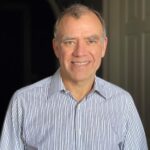 CHRISTOPHER WILKINS was appointed Music Director of the Boston Landmarks Orchestra in the spring of 2011. Since then, he has expanded the orchestra’s mission of making great music accessible to the whole community. He has also helped develop the orchestra’s Breaking Down Barriers initiative, making accessibility a priority in all aspects of the orchestra’s activities.
CHRISTOPHER WILKINS was appointed Music Director of the Boston Landmarks Orchestra in the spring of 2011. Since then, he has expanded the orchestra’s mission of making great music accessible to the whole community. He has also helped develop the orchestra’s Breaking Down Barriers initiative, making accessibility a priority in all aspects of the orchestra’s activities.
Mr. Wilkins also serves as Music Director of the Akron Symphony. As a guest conductor, Mr. Wilkins has appeared with many of the leading orchestras of the United States, including those of Chicago, Cincinnati, Cleveland, Dallas, Detroit, Houston, Indianapolis, Los Angeles, Pittsburgh, and San Francisco. Previously, Mr. Wilkins served as Music Director of the Orlando Philharmonic, the San Antonio Symphony, and the Colorado Springs Symphony.
He has served as associate conductor of the Utah Symphony, assisting Joseph Silverstein; assistant conductor of the Cleveland Orchestra under Christoph von Dohnányi; conducting assistant with the Oregon Symphony under James DePreist; and was a conducting fellow at Tanglewood. He was winner of the Seaver/NEA Award in 1992.
Born in Boston, Mr. Wilkins earned his bachelor’s degree from Harvard College in 1978. He received his master of music degree at Yale University in 1981, and in 1979 attended the Hochschule der Künste in West Berlin as a recipient of the John Knowles Paine traveling fellowship. As an oboist, he performed with many ensembles in the Boston area, including the Berkshire Music Center Orchestra at Tanglewood, and the Boston Philharmonic under Benjamin Zander.
First Violin
Greg Vitale, Concertmaster
Christine Vitale
Zoya Tsvetkova
Yeolim Nam
Mina Lavcheva
Antoaneta Anguelova
Michael Rosenbloom
Lisa Brooke
Natalie Calma
Second Violin
Paula Oakes, Principal
Clayton Hoener
Asuka Usui
Greta Myatieva
Emily Dahl Irons
Sheila Vitale
Jessica Amidon
Viola
Don Krishnaswami, Acting Principal
Noriko Futagami
Russell Wilson
Josh Wareham
Amelia Hollander Ames
Samuel Kelder
Cello
Aron Zelkowicz, Principal
Patrick Owen
Jolene Kessler
Miriam Eckelhoeffer
Kevin Crudder
Bass
John Shiu, Acting Principal
Kate Foss
Rob Caplin
Brian Thacker
Flute
Ann Bobo, Acting Principal
Mary Robinson
Piccolo
Sarah Brady
Oboe
Andrew Price, Principal
Ben Fox
English Horn
Ben Fox
Clarinet
Rane Moore, Principal
Margo McGowan
Bassoon
Ronald Harotunian, Acting Principal
Gregory Newton
Contrabassoon
Margaret Phillips
Horn
Kevin Owen, Principal
Kate Gascoigne
Nick Auer
Michael Bellofato
Trumpet
Dana Oakes, Principal
Mary-Lynne Bohn
Trombone
Hans Bohn, Acting Principal
Michael Tybursky
Donald Robinson
Timpani
Robert Schulz, Acting Principal
Percussion
Craig McNutt, Acting Principal
Gregory Simonds
Hans Morrison
Personnel Manager
Kevin Owen
Acting Librarian
Katie Nakanishi
Maestro Zone Conductor
Damali Willingham
Soprano
Heidi Ashih
Rebecca Burstein
Leslie Benvenuti
Kristin Bilodeau
Yoshi Campbell
Tanya Cosway
AnaCristina Deschamps
Claire Folini
Carolyn Frantz
Bonnie Galayda
Kathleen Gallagher
Beth Goldman
Hala-Mary Hazar
Elisabeth Howe
Kai-Yin Hsu
Liya Kang
Ruthlyn Kohn
San San Lee
Nicole Marks
Dorian Maverick
Tammy Ngai
Peg Schadelbauer
Erica Scott-Puopolo
Nina Danger Silva-Bowe
Sarah Stankowicz
Ripley Stark
Marie Toussaint
Alto
Laurie Arnone
Rita Corey
Janika Dillon
Judith Dortz
Margaret Evans
Lisa Ferrante-Walsh
Virginia Fitzgerald
Linda Frayling
Bella V Harris
Janice Hegeman
Marjorie Hilton
Alison Howe
Jackie Kann
Meredith Lowmaster
Jeb Mays
Katherine Meifert
Maggie Molloy
Anne Moore
Natasha Nowel
Liz Percy
Sandy Sachs
Mariflor Salas
Amanda Simeone
Rikki Tracy
Marisela Valero
Mary Weinstein
Cynthia Welch-Moriarty
Natasha Westland
Vivian Yu
Tenor
Howard Bernstein
Fernando Colina
Kip Ellis
Willis Emmons
Peter Ersland
Sean Hale
David Hunt
Carol Kountz
Kevin Martin
Corey Shotwell
James White
Tricia Zuttermeister
Bass
Daniel Albert-Rozenberg
Noah Daniel Blohm
Greg Buckland
John Churchwell
Arthur Comegno
Jim Fauntleroy
James Fleming
Bob Goldsmith
Alexander Grey
Joshua Howe
Nat Kuhn
Daniel Malis
Mark Matthews
Giorgio Melloni
Michael Nathanson
Noel Reid
Devon Russo
Ronald Segal
Bradley Turner
Robert Wright
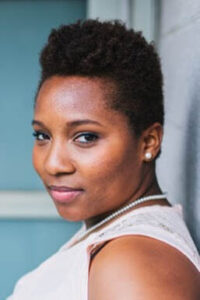
SIRGOURNEY COOK, a Chicago, IL native, completed her graduate education at Longy School of Music of Bard College in Cambridge, MA where for two years, she was named a Presidential Scholar and earned a Master of Music Degree in Opera Performance, May 2016. There, she studied with Bass-Baritone, Robert Honeysucker. She has been a member of the Boston Opera Collaborative since 2016. In 2011, Sirgourney began touring and performing as soprano background vocalist for Oscar and Grammy Award Winning Actress and Recording Artist Jennifer Hudson, where she sang on national and international stages from the U.S., London and China and many others, for over three years. Most recently, she was featured as a soloist in Duke Ellington’s “Concerts of Sacred Music” conducted by Ellington’s protégé, Maestro Randall Keith Horton at Boston University’s 2017 Rev. Dr. Martin Luther King Jr. Birthday Commemoration.
Sirgourney served as a Graduate Teaching Assistant at the David A. Ellis Elementary School in Roxbury, MA in 2014-2016 in partnership with Longy School of Music of Bard College and Boston Public Schools (BPS). As a performing artist, she continues to use music as an avenue to inspire, educate and advocate for underprivileged youth. She currently serves as the Performing Arts Teacher for grades 5-8 at Roxbury Prep Dorchester.
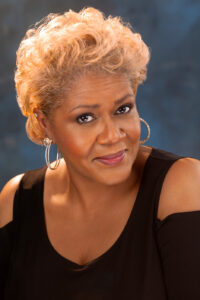
Grammy Award winning American mezzo soprano TICHINA VAUGHN has established an important presence among the world’s leading opera houses, concert halls and theaters. As an outstanding singing-actress versatile in opera, operetta, musical theater, and jazz, Vaughn continues to gather both popular and critical acclaim. Ms. Vaughn began her operatic career as a member of the Metropolitan Opera’s Lindemann Young Artist Program directly after receiving her bachelor’s degree in Vocal Performance from the University of North Carolina School of the Arts.
As a visiting artist, Ms. Vaughn made her Italian debut as Azucena Il Trovatore under the baton of Nicola Luisotti at Teatro Verdi Trieste where she was later heard as Ulrica in Un ballo in maschera, a role she also performed at Teatro Lirico di Cagliari, Teatro Massimo Palermo, Teatro delle Muse Ancona, Teatro Verdi Salerno, and Teatro Filarmonico Verona. She became a regular guest at the Arena di Verona where she essayed more than 50 performances of Amneris in Franco Zeffirelli’s Aida as well as several performances of Azucena Il Trovatore.
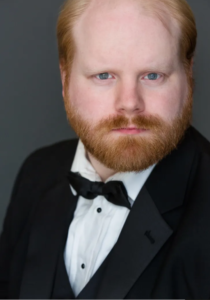 ETHAN BREMMER made his local debut with Boston Opera Collaborative in 2006 as Achilles in Gluck’s Iphigenie en Aulide, and then sang with the company as Rodolfo in Puccini’s La Bohème. He performed the premier performance of Odyssey Opera of Boston as Baroncelli in Wagner’s Rienzi, Sir Robert Shallow in Sir John in Love with Odyssey Opera, and Manrico in Windham Orchestra’s Production of Il Trovatore.
ETHAN BREMMER made his local debut with Boston Opera Collaborative in 2006 as Achilles in Gluck’s Iphigenie en Aulide, and then sang with the company as Rodolfo in Puccini’s La Bohème. He performed the premier performance of Odyssey Opera of Boston as Baroncelli in Wagner’s Rienzi, Sir Robert Shallow in Sir John in Love with Odyssey Opera, and Manrico in Windham Orchestra’s Production of Il Trovatore.
In 2013 Mr. Bremner performed as Baroncelli in Wagner’s Rienzi in the premiere performance by Odyssey Opera. He followed that up with numerous other roles with Odyssey Opera including a solo role in the Grammy Nominated recording of Della Joio’s Trial at Rouen.
Equally adept at concert repertoire, Mr. Bremner recently performed Schubert’s Die Wintereisse at First Church of Boston. He has also been featured as a Brookline Chorus Artist in Residence from 2007-2011. With the Brookline Chorus, he has appeared as the tenor soloist in a variety of works such as Mendelssohn’s Elijah, Bach’s Mass in B Minor and many others. He has also enjoyed solo appearances in Verdi’s Requiem and Beethoven’s 9th Symphony with the Boston Civic Symphony and in Mozart’s Requiem with the Rhode Island Civic Chorale, in addition to appearances in the ensemble of the prestigious Handel and Haydn Society.
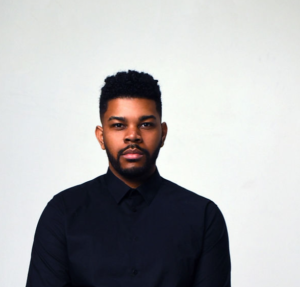
Photo Credit: Courtney Carey
Praised by Opera News for his “appealingly suave baritone”, PHILLIP BULLOCK, a native of Washington DC, has been featured in operas, recitals and concerts, throughout the United States. Recently, Phillip has performed the role of Jake, in Porgy and Bess, at the Sächsische Staatsoper in Dresden, Germany, Palacio de Bellas Artes in Mexico City, Mexico, and covered the same role in The Royal Danish Opera’s new production, in Copenhagen, Denmark. He was seen in concert performances of Beethoven’s 9th Symphony and Kurt Weil’s Seven Deadly Sins with National Music Festival Orchestra, in addition to being featured in Cincinnati Opera’s annual concert, Opera Goes to Church.
In past seasons, he has worked with Kentucky Opera, The Martina Arroyo Foundation, Sarasota Opera, Virginia Opera and Cincinnati Opera as a resident artist.
In 2020 Phillip had the pleasure of singing in Atlanta Opera’s production of Porgy and Bess and was scheduled to premier two new operas, Kate Soper’s piece Romance of the Rose (singing the God of Love) and Gregory Spears and Tracy K. Smith’s new opera Castor & Patience (Singing Cato) Castor with Cincinnati Opera.
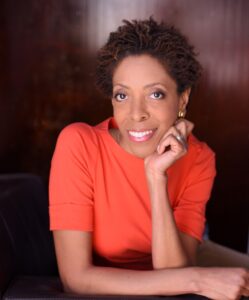 DR. DIANE WHITE-CLAYTON composer, soprano, pianist, choral conductor, workshop clinician, author, minister and speaker is a native of Washington, DC where she began performing at the age of four. She holds a Ph.D. and MA in Music Composition from the University of California, Santa Barbara and received her Bachelor of Arts in Music with honors from the Washington University in St. Louis, Missouri. As an Ambassador of Goodwill, she studied on a Rotary Scholarship to Paris, France, studying piano at the Ecole Normale de Musique. A highly acclaimed performer of classical, gospel and jazz, she has held positions with such institutions as Grinnell College, Appalachian State University, Westmont College, the University of California at Santa Barbara, the Washington Performing Arts Society and the St. Louis Black Repertory Theatre Company. Her choral compositions have been performed across the globe and she travels extensively as a performer and conductor of workshops throughout the United States and abroad. Affectionately known as “Dr. Dee,” she has self-produced recordings and several published compositions. Diane is on staff as a Choral Conductor at the 6,000-member Faithful Central Bible Church in Inglewood, California and is the Artistic Director of the Albert McNeil Jubilee Singers. She also works as a Vocal Clinician for Disney Performing Arts, and is a member of the faculty at Loyola Marymount University in Los Angeles, California where she resides with her husband, accomplished R&B percussionist, Joe Clayton.
DR. DIANE WHITE-CLAYTON composer, soprano, pianist, choral conductor, workshop clinician, author, minister and speaker is a native of Washington, DC where she began performing at the age of four. She holds a Ph.D. and MA in Music Composition from the University of California, Santa Barbara and received her Bachelor of Arts in Music with honors from the Washington University in St. Louis, Missouri. As an Ambassador of Goodwill, she studied on a Rotary Scholarship to Paris, France, studying piano at the Ecole Normale de Musique. A highly acclaimed performer of classical, gospel and jazz, she has held positions with such institutions as Grinnell College, Appalachian State University, Westmont College, the University of California at Santa Barbara, the Washington Performing Arts Society and the St. Louis Black Repertory Theatre Company. Her choral compositions have been performed across the globe and she travels extensively as a performer and conductor of workshops throughout the United States and abroad. Affectionately known as “Dr. Dee,” she has self-produced recordings and several published compositions. Diane is on staff as a Choral Conductor at the 6,000-member Faithful Central Bible Church in Inglewood, California and is the Artistic Director of the Albert McNeil Jubilee Singers. She also works as a Vocal Clinician for Disney Performing Arts, and is a member of the faculty at Loyola Marymount University in Los Angeles, California where she resides with her husband, accomplished R&B percussionist, Joe Clayton.
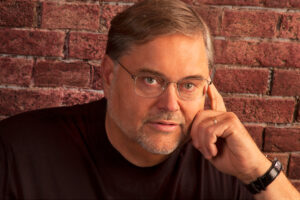
Photo Credit: Susan Wilson
DAVID HODGKINS has delighted audiences in the greater Boston area for over 30 years with “creative programs, sung with enthusiasm and tonal beauty” (Ed Tapper, Bay Windows). Mr. Hodgkins is the Artistic Director of Coro Allegro, Boston’s LGBTQ+ and allied classical chorus, which Boston Globe critic Michael Manning deemed “one of Boston’s most accomplished choruses.” Mr. Hodgkins is also Artistic Director of The New England Classical Singers in Andover, Director of Music at The Commonwealth School in Boston, advanced conducting instructor at the Kodály Music Institute, and serves on the advisory boards of The Boston City Singers and the UMass/Amherst Music Department. Mr. Hodgkins has performed with Coro Allegro at the ACDA and GALA music festivals, served as guest conductor with Chorus Pro Musica, Masterworks Chorale, and Emmanuel Music, and has made numerous festival appearances as guest conductor and clinician. In addition to the Boston Landmarks Orchestra, his ensembles have collaborated with the Boston Celebrity Series, Boston Cecilia, Handel and Haydn Society, Pro Arte Chamber Orchestra, The New England String Ensemble, and the Terezín Music Foundation. Mr. Hodgkins has conducted numerous world and Boston premiere performances of works ranging from Marianne Martinez to Arvo Pärt.
Mr. Hodgkins has been featured in Choral Director Magazine, The Voice of Chorus America, UMass Amherst Magazine, and Haverhill Life. He has served as producer for three award-winning CDs by La Donna Musicale, Laury Gutiérrez, Artistic Director, In the Style of… for Terry Everson, trumpet, and Shiela Kibbe, piano on Albany Records, and a CD of trumpet concerti for the Boston University Wind Ensemble and Terry Everson, directed by David Martins.
David Hodgkins received his Bachelor of Music in voice, piano, and harpsichord from UMass/Amherst, a Masters in Choral Conducting from Temple University, and fellowships in choral and orchestral conducting at the Aspen and Sandpoint music festivals. His mentors include Wayne Abercrombie, Fiora Contino, Alan Harler, James Roth, Gunther Schuller, and Paul Vermel. Mr. Hodgkins has served on the faculties of the New England Conservatory, UMass/Amherst, Temple University, and Clark University.
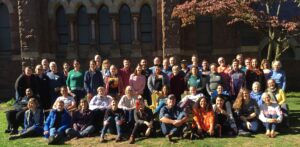 CORO ALLEGRO is proud to be Boston’s award-winning LGBTQ+ and allied classical chorus. Under the leadership of Artistic Director David Hodgkins, Coro Allegro is known for critically acclaimed programming, performances, and recordings of works by diverse classical and contemporary composers. Founded in 1990, Coro is dedicated to providing access to choral music to broad audiences, to performing works by under represented composers, and to serving as a model LGBTQ+ organization through artistic excellence and visibility. Through their performances, collaborations, and community partnerships, Coro Allegro strengthens community, builds bridges between disparate communities, and enriches lives in the Greater Boston area and beyond. Coro Allegro has been named a winner of the 2019 prestigious Chorus America/ASCAP Award for Adventurous Programming, as well as the 2012 Chorus America/ASCAP Alice Parker Award, for their commitment to fostering and promoting new music. Altogether Coro Allegro has performed 24 world premieres, including 15 commissions, and earned praise from Gramophone magazine for recordings that introduced “meaningful additions to the choral repertoire.”
CORO ALLEGRO is proud to be Boston’s award-winning LGBTQ+ and allied classical chorus. Under the leadership of Artistic Director David Hodgkins, Coro Allegro is known for critically acclaimed programming, performances, and recordings of works by diverse classical and contemporary composers. Founded in 1990, Coro is dedicated to providing access to choral music to broad audiences, to performing works by under represented composers, and to serving as a model LGBTQ+ organization through artistic excellence and visibility. Through their performances, collaborations, and community partnerships, Coro Allegro strengthens community, builds bridges between disparate communities, and enriches lives in the Greater Boston area and beyond. Coro Allegro has been named a winner of the 2019 prestigious Chorus America/ASCAP Award for Adventurous Programming, as well as the 2012 Chorus America/ASCAP Alice Parker Award, for their commitment to fostering and promoting new music. Altogether Coro Allegro has performed 24 world premieres, including 15 commissions, and earned praise from Gramophone magazine for recordings that introduced “meaningful additions to the choral repertoire.”
In 2021, Coro Allegro was awarded the Choral Arts New England Board Grant for diversity, equity, and inclusion for its Amplifying Black Voices series that celebrates the work of Black composers, conductors, artists, and activists with whom they have collaborated.
In addition to the Boston Landmarks Orchestra, Coro Allegro collaborations include the Boston Cecilia, the Boston City Singers, the Boston Gay Men’s Chorus, Boston Musica Viva, the Celebrity Series of Boston, Chorus Pro Musica, the Handel & Haydn Society, The Heritage Chorale of New Haven, La Donna Musicale, Pro Arte Chamber Orchestra, Rumbarroco, the Terezín Music Foundation, and the Toronto Children’s Chorus.
This fall, Coro Allegro premieres Jeremiah Klarman’s “Sketch for Terezín/Does Grace”on poems by Rita Dove and Almog Beharat at the Terezín Music Foundation GALA at Boston’s Symphony Hall (Sunday, October 16, 2022 at 4pm). Coro Allegro’s official 2022-2023 season opens Sunday, November 6, 2022 with Letters to Our Children: Voices across Generations for LGBTQ+ Youth (3pm, Old South Church, Boston). The concert features the world premiere of HERE I AM: I AM HERE by composer Andrea Clearfield, based on open letters to a transgender child and to a survivor of conversion therapy by LGBTQ+ youth activists Mimi Lemay and Sam Brinton. The 14th annual Daniel Pinkham Award, given annually in memory of the acclaimed and beloved Boston LGBTQ+ composer, will be presented to Sam Brinton. In the spring Coro Allegro marks Pinkham’s centennial with Fanfares (Sunday March 12, 2023 at 3pm at the Church of the Covenant, Boston), featuring Pinkham brass and choral works, Vaughan Williams’ Mass in G minor, and Shawn Crouch’s Paradise. The White Raven/Lord Nelson Mass (Sunday, May 7, 2023 at 3pm at Sanders Theatre, Cambridge), pairs Pinkham’s setting of 18th century visionary poet Christopher Smart’s celebration of the diversity of creation with Hadyn’s mass for troubled times.
Coro Allegro also reaches national and international audiences through radio broadcasts and festival performances at the LGBTQ+ GALA Choruses Festivals, the Chorus America convention, and the Eastern Division Convention of the American Choral Directors Association (ACDA). Coro Allegro has released four critically acclaimed commercial recordings: In Paradisum and Awakenings on the Navona Records label, as well as In the Clearing and Somewhere I Have Never Traveled. Coro Allegro’s forthcoming album, We Are Here, will feature new works by American composers Eric Banks and Kareem Roustom that bear witness to international human rights. Coro is committed to offering a welcoming, affirming and supportive environment for performers and audiences alike of all sexual orientations, gender identities and expressions, races, religions, and ethnicities. Coro Allegro is supported in part by grants from the Massachusetts Cultural Council, The Equality Fund of The Boston Foundation, and Choral Arts New England.
At a certain place in Beethoven’s Ninth Symphony, one might have the sensation of floating above the earth in a starry dome, with a dream of immortality in the heart; all the stars seem to glimmer around, with the earth sinking ever deeper downwards.
Friedrich Nietzsche
Human, All Too Human: A Book for Free Spirits (1878)
When Ludwig van Beethoven unveiled his ninth and final symphony to an eager Viennese audience in 1824, he had not written a symphony in nearly twelve years. The premiere was a major cultural event. Many of the leading figures of Viennese society attended, even though public taste had long-since turned away from the complexities of Beethoven’s music toward the more easy-to-digest style of Gioachino Rossini. Rossini was far and away the most popular composer of the day. Beethoven was not on board with the trend: “You do not know how to deal with real drama,” Beethoven reportedly told Rossini to his face when they met in 1822.
In 1824—the same year as the premiere of the Ninth—Rossini moved from Naples to Paris to assume the directorship of the Théâtre Italien. He immediately began work on William Tell, a French-language opera aligning with the resurgent revolutionary sentiments of the Parisian public. The opera, like Beethoven’s Ode to Joy, takes its inspiration from the writing of German playwright Friedrich Schiller (1759–1805). Beethoven no doubt knew and admired the drama, which unfolds amidst the battle of the Swiss for independence from the tyrannical rule of the Hapsburgs in the early 14th century.
By legend, William Tell was a huntsman turned nationalist, renowned for his superb marksmanship. When compelled by his district’s despotic Governor to shoot an arrow through the center of an apple placed on his son’s head, Tell hits the mark perfectly. In the final act, shouting “Let Switzerland breathe!” he hits with equal aplomb his much-preferred target: the Governor himself.
Not long after completing William Tell—his final opera—Rossini wrote to a young composer with advice on composing an opera’s overture: “Wait until the evening before the opening. Nothing primes inspiration more than necessity, whether it be the presence of a copyist waiting for your work, or the prodding of an impresario tearing his hair out. I composed the overture to Otello in a little room in the Barbaja Palace, wherein the baldest and fiercest of directors had forcibly locked me with a lone plate of spaghetti and the threat that I would not be allowed to leave the room alive until I had written the last note… I composed the overture to Comte Ory while fishing, with my feet in the water, and in the company of Signor Agnado, who talked of his Spanish fiancée. The overture to William Tell was composed under more or less similar circumstances.”
Although Rossini wrote with astonishing ease—thirty-eight operas over a twenty-year period—it is hard to take him at his word. The Overture to William Tell is the most innovative and ambitious he ever produced. It is a 12-minute tone poem, drawing music from four different scenes of the opera. Hector Berlioz—who was in the throes of composing his own Symphony fantastique at the time—enthused, “Rossini has so enlarged the form that his overture becomes, in truth, a symphony in four very distinct parts, rather than the two-movement piece with which composers are ordinarily satisfied.”
The William Tell Overture begins with music evoking the serenity of dawn in the Swiss countryside. A slow rising line in the solo cello suggests somebody looking skyward, or maybe the lifting of a stage curtain. Four more solo cellos respond in the manner of a male chorus. A second solo cello exchanges melodic phrases with the first, in a duet of sublime and poetic beauty. They pause twice to listen to the sound of distant thunder in the timpani. To close this ruminative “sun salutation,” the solo cello repeats the opening rising line three times, reaching at last the instrument’s highest register. A rustling figure in the second violins and violas enters underneath the cello, quietly at first, imitating the gentle rush of wind. Woodwinds introduce the first sensation of raindrops; string tremolos signal growing anxiety. The tumult builds; the bass drum enters; scales in the upper strings and woodwinds cascade downward; and trombones and low instruments counteract with surges in the opposite direction. We are in the middle of a tempest on Lake Lucerne, the same storm that will save Tell from his forced journey into imprisonment.
Now Rossini clears the air, as echoes of distant lightning flashes in the flute morph into bird calls. The English horn begins Rossini’s famous ranz des vaches, a traditional tune sung by Swiss Alpine herdsmen—or played on an alphorn—to call cattle. The tradition of the ranz des vaches is a source of Swiss pride and patriotism. We have already heard one this summer, when Berlioz imagined a Swiss setting for the third movement of his Symphonie fantastique. Like Berlioz, Rossini sets his tune as a dialogue between two woodwind instruments: a flute echoes the English horn, and then adorns the melody with increasingly elaborate flourishes. Plucked strings provide the support of an accompanying harp or guitar. Then, without a hint of anticipation… Hi-yo Silver!… here come the Swiss Patriot Troops—unmistakably on horseback—to provide a stirring conclusion to the struggle, the opera, and this most famous of all opera overtures.
The Boston Landmarks Orchestra gets its name from the notion that live music can enliven civic spaces to create experiences that enhance both. The “synergy of site and sound,” Ambassador Swanee Hunt has called it. My first experience conducting the Boston Landmarks Orchestra, for example, was an unforgettable concert on July 7, 2010, in Fenway Park, featuring the finale of the Beethoven Ninth Symphony. It is unlikely, though, that any performance in Boston history—or American history for that matter—has ever approached the ambition, grandeur, and sheer audacity of a music festival that took place in Copley Square from June 17 to July 4, 1872—one hundred and fifty years ago this summer:
“A twenty-thousand-voice chorus. A thousand-piece ‘Grand Orchestra.’ Four foreign bands. A huge 350’ x 550’ building in Copley Square, built for the event. An audience of up to twenty-five thousand people. One hundred Boston firemen banging away on anvils. And a ‘Waltz King’—Johann Strauss II—from Vienna.”
This was the World’s Peace Jubilee and International Musical Festival, as described by historian, educator, and self-professed Johann Strauss II “addict,” Dann Chamberlin. He continues:
“How did such an event come to be? In general terms, it could be seen as a manifestation of the “bigger is better” ethos of the time, when we were a rapidly growing nation expanding to the Pacific coast. The transcontinental railroad had just been completed, and the industrial revolution was taking hold.
“The enterprising soul who made the Jubilee happen was an Irish-born American by the name of Patrick S. Gilmore. He was America’s most prominent bandmaster before John Philip Sousa came on the scene. He was also a composer, most famous for the song ‘When Johnny Comes Marching Home.’ Among his other works is a Bay State Polka.
“In 1869, he had put together a National Peace Jubilee to celebrate the restoration of peace to our land after the Civil War. That one had a chorus of ‘only’ ten thousand voices. When he was congratulated for the success of the Jubilee, he is reported to have exclaimed, ‘Now there is nothing left for me to do but get up another jubilee twice as big as this one!’
“So the die was cast. The end of the Franco-Prussian War in 1871 gave Gilmore the reason he was looking for to stage another Peace Jubilee—this time an international one. Armed with a letter of introduction and endorsement from President Ulysses S. Grant, Gilmore went over to Europe to line up his talent.”
At the top of Gilmore’s VIP wish list was the famed Waltz King, Johann Strauss II, who eventually agreed to appear in Boston for a reported fee of $20,000. His contract committed him to conduct, perform as violin soloist, and compose two new waltzes for the occasion. The first of these was Jubilee Waltz, dedicated to Gilmore. Always happy to fulfill a lucrative made-to-order commission, Strauss created a pastiche waltz that concludes with a quotation from The Star-Spangled Banner. In the 1950s, Arthur Fiedler and the Boston Pops recorded the Jubilee Waltz for an album called Mr. Strauss Comes to Boston, featuring music performed at the Jubilee. The second new waltz was Fair Columbia, or, as it was published in its piano version, To America: Fair Columbia Waltzes. In a letter to me in March of 2022, Dann Chamberlin reported on his research:
“But Fair Columbia never turned up anywhere, and we more or less concluded that the work had never come into being. But just two years ago now, Fair Columbia turned up in an archive in Michigan. I was thrilled to say the least… as it’s not every day (or week or month) that a previously unknown Strauss waltz is unearthed.”
Since the version unearthed was for piano, in order to bring Fair Columbia fully back to life, Dann commissioned an orchestration by Kurt Schmid, an Austrian conductor, composer, and arranger who has Strauss’s orchestrations in his blood. Maestro Schmid is an accomplished conductor of many orchestras and ensembles. But of special note, he has been Chief Conductor of the orchestra in the Ukrainian city of Luhansk—in the Donbas region—since 2002. In 2014, Russian separatists took control of the city, and the orchestra relocated to Severodonetzk. Since July 3, 2022 the entirety of Ukraine’s Luhansk Oblast is controlled by Russia. Most of his musicians have now reorganized in Lvov (Lemberg). He reports that “on the 3rd of September we will give a concert in Lvov, and on the 4th in the very small city of Kolomyya… On the 6th of August I am busy in Vienna, but would very much like to visit Boston sometime soon!”
In addition to commissioning the orchestration of Fair Columbia by Maestro Schmid, Dann Chamberlin also arranged to have the score and orchestral parts prepared for the Boston Landmarks Orchestra by Ross Capon, a colleague who serves as rehearsal pianist and double bassist for the Victorian Lyric Opera Company in Rockville, Maryland. He was assisted in his work by his son, William, age 14, who has performed as principal oboe in several of the company’s productions, and is about to begin his senior year at St. Mary’s College of Maryland. William has also been orchestrating the overture to Sousa’s The Free Lance “for fun.”
Fair Columbia follows the usual Straussian strategy of linking together a sequence of waltzes—typically five, as in this case—of contrasting moods and keys. Also standard is a slow introduction—using some of the material of the waltzes to come—and a coda that revisits several of the work’s principal themes. Fair Columbia has an introduction, but no coda. So Maestro Schmid has fashioned one for this, the modern-day premiere of To America: Fair Columbia.
Dann Chamberlin quotes an observant reporter, describing a scene at one of Strauss’s 1872 Jubilee performances, though it could well be an account of a scene at any given Landmarks Orchestra concert:
“While the grand orchestra, led by Herr Strauss, was rehearsing the Blue Danube Waltz, a little girl, four or five years old, who was with her parents on the floor, nodded her head in unison with the exquisite music for some time with an air of the supremest delight. At last, her feet were unable to resist the seductive strains any longer, and the little girl began to dance back and forth. Her innocent happiness added in no small degree to the pleasure of those who witnessed it and heard the music.”
For many years, the Landmarks Orchestra has organized programs and collaborations around the glorious body of American sacred songs by anonymous authors known as the Negro spirituals. William Dawson—whose extraordinary symphony will be the centerpiece of our August 24 program—preferred the term Negro folk songs: “we have got to know and treat them as folk songs because they contain the best that’s in us.”
Among the various symphonic works that draw on the legacy of the spirituals, one of the finest is Nathaniel Dett’s The Chariot Jubilee, as orchestrated by Hale Smith. Dett’s work brings together two contrasting types of music, combining the spiritual Swing Low, Sweet Chariot with the composer’s own original music drawing on the tradition of the English choral anthem. The Landmarks Orchestra performed The Chariot Jubilee in 2019, with members of the One City Choir and the New England Spiritual Ensemble.
Out of that experience, we hatched the idea to commission a new work that would extend the type of hybrid writing begun by Dett. The Chair of the Landmarks Orchestra’s Board, Rev. Emmett G. Price III, enthusiastically recommended Dr. Diane White-Clayton—“Dr. D”—for the task. A wonderful talent with a wide range of musical interests, she is a vocalist, pianist, composer, conductor, clinician, and speaker, trained in classical piano, gospel singing, and conducting. She currently serves on the faculty of UCLA’s Herb Alpert School of Music.
The work she has written for us—Many Mansions—is inspired by a widely-performed arrangement by Dr. Roland Carter of the spiritual In Bright Mansions Above. With Dr. Carter’s blessing, Dr. Dee has turned an unaccompanied choral work into a work for soloists, chorus, and orchestra. It is scored for the same forces as the Beethoven Ninth, and is conceived as a companion to the Ninth. I was struck by parallels between the two texts: the spiritual’s text, “in my Father’s house there are many mansions” (John 14:2) compared to the Schiller poem that Beethoven set, “above the stars must live a loving Father…”
Notes on Many Mansions from the composer, Dr Diane White-Clayton:
Negro Spirituals are sacred folk songs birthed on American soil by people of African descent, amidst the horrors of the institution of slavery. These beloved songs I heard from my youth not only as folk songs but as classically-arranged vocal works by great African American composers on whose shoulders I stand.
One such composer, whom I greatly admire and adore, is Dr. Roland Carter (b. 1942). When Maestro Christopher Wilkins approached me with the daunting task of creating a new work based on Carter’s iconic arrangement of In Bright Mansions, I knew I was treading on sacred ground.
Dr. Carter enlightened me on the classic arrangements that influenced his: from the 1874 First Edition of the Hampton Collection of Spirituals—which he remembered singing as a college student at Hampton—to a similar Nathaniel Dett (1882-1943) version, to the Leonard De Paur (1914-1998) arrangement sung by the famed Hall Johnson Choir in the 1936 movie, The Green Pastures.
My goal was not to “re-arrange,” or to improvise on Dr. Carter’s arrangement. Instead, I analyzed his version, digging deep into its fabric. I extracted themes and harmonies, his insertion of Jesus’ words from the 14th chapter of the Gospel of John, and even certain elements of the aforementioned arrangements. Seeking to build upon the strong foundation my elder composers laid, I used this source material to create a new work.
Having begun the research in 2019, I started writing more intensely at the beginning of 2020. Then, the pandemic hit. And two months later, George Floyd was murdered before our eyes. All of a sudden, this folk song that cried, “Lord, I want to live up yonder in bright mansions above,” and “My mother’s gone to glory; I want to go there too,” took on an entirely different meaning. It was palpable. Death overwhelmed us all. The trauma, the loss, the pain. The anger, the confusion, the despair.
And it wouldn’t cease. At one point in the piece, I abbreviated the lyric to say only, “I want to live!” I imagined George Floyd whispering those words as his life ebbed away. Then I heard my nephew’s powerful voice—Phillip Bullock, the baritone giving the work’s premiere tonight—sing that line as a Black man simply proclaiming, “I want to live!”
I wrote for America. I wrote for those who lost family members, wanting us to use this piece to mourn together. I used the spiritual’s verses, “My mother’s gone to glory…my father… my brother… my sister…” But I added a verse not found in the original: “My child has gone to glory, I want to go there,” having heard the pain of a mother who lost her baby to Covid. At times, I would sit at the piano, sobbing in the midst of composing. Yet, it helped to save me. It gave me hope…creating beauty out of sorrow. Remembering death is not the end.
-Diane White-Clayton
In my Father’s house are many mansions: if it were not so, I would have told you. I go to prepare a place for you.
Gospel of John (14:2), King James Version
The text to Many Mansions:
In bright mansions above,
In bright mansions above;
Lord, I want to live up yonder
In bright mansions above.
My mother’s gone to glory,
I want to go there too;
Lord, I want to live up yonder
In bright mansions above.
Let not your heart be troubled,
If ye believe in God,
Believe also in me.
In my Father’s house,
There are many mansions:
If it were not so,
I would have told you.
My father’s gone to glory;
My brother’s gone to glory;
My sister’s gone to glory;
My child has gone to glory.
I want to go there.
I want to know where.
I want to live;
I want to live.
In bright mansions above,
In bright mansions above;
Lord, I want to live up yonder
In bright mansions above.
In my Father’s house,
There are many mansions:
If it were not so,
I would have told you.
I go to prepare a place for you,
That where I am ye may be also.
Bright mansions, bright mansions above.
Lord, I want to live up yonder.
For expressive range and communicative power, no work commands attention as Beethoven’s Ninth does. The purity and force of its two-hundred-year-old vision still brings solace to our world. Leonard Bernstein conducted it in December 1989 at the Berlin Wall. Its Ode to Joy is the official anthem of the European Union. Beethoven did not write music to fill a few hours with pleasant diversion; he wrote music to be listened to and reckoned with.
Following the completion of the Seventh and Eighth symphonies, Beethoven’s output slowed considerably. He was beset by personal worry and illness. And his works took longer for him to produce, partly because he was writing now with greater depth and imagination. He had entered a new phase in his creative life—his “late period.” His music sounded other-worldly, untethered, irrational, and puzzling—not just to the Rossini-loving Viennese, but to nearly everyone.
Edward Said, in his book On Late Style: Music and Literature Against the Grain, examines the musical and literary output of creators in their final years. According to Said, late works tend to:
All these traits are true in the Ninth. The Ode to Joy theme gestated within Beethoven beginning in his teen years. The symphony sounded unlike anything that came before. And it is not an exaggeration to say that music of the 19th and 20th centuries is inconceivable without the Ninth.
The first movement begins with mystery and ambiguity. The tempo, harmony, melody, and home key are all in doubt. As the music grows stronger, the motives expand, hurling themselves forcefully in a downward direction. A group of lyrical, upward themes follows. After a development section that intensifies into a fugue, the return of the opening idea is not whispered as before, but roared; there are frightening torrents of sound. I think of T. S. Elliott’s memorable phrase: “The end of all our exploring/Will be to arrive where we started/And know the place for the first time.”
The second movement is a hybrid of scherzo, fugue, and sonata forms. The main theme is athletic and bracing, but its open intervals and minor mode echo the ominous character of the first movement. The central trio provides antic relief, and also one of the most challenging of the many tempo controversies surrounding the Ninth. Beethoven’s metronome indication—116 beats to the minute—seems equally ill-suited to the half-note as to the whole note. An examination of the manuscript shows that Beethoven himself changed his mind about which of those two note-values should be represented by the measure.
The Adagio is one of Beethoven’s most sublime creations. It has two blissful and gorgeous themes, each of which sets up its own set of variations. The solo for the fourth horn that emerges in the middle of the movement was written for a new invention, a valved horn that could play all the notes of the chromatic scale. Maynard Solomon sums up this glorious music perfectly: “In a sense, all of Beethoven’s best music is utopian, in that it holds out images of beauty, joy, and renewal as models of future possibility.”
The famous finale of the Ninth can be thought of as a four-movement symphony within a symphony. The first “movement” of it begins with Beethoven’s Schreckensfanfare—Fanfare of Terror—which leads into a recitative for cellos and basses alone. It is instrumental music sounding as if it were the setting of a text, which, of course, it will soon become. There are brief recollections of themes from the previous three movements, until the woodwinds suggest a fourth option, the Ode to Joy. This hymn-tune begins with utter simplicity in the cellos and basses at first and without harmony, and then with ever-increasing adornment as other instruments join in.
The Fanfare of Terror threatens once again, and then—for the first time in musical history—a human voice joins the symphonic texture. The solo bass’s opening words are Beethoven’s, not Schiller’s: “Oh friends, not these tones! Rather let us raise our voices with more pleasant and joyful sounds.” The Ode to Joy pours forth once again with elation and optimism. The second “movement” of the finale is a grand march featuring the tenor soloist. It is, in fact, another variation of the Ode to Joy theme. With the third section, we enter a holy place: “Do you kneel down, you millions? Do you sense your creator, world? Seek Him beyond the stars!” Here Beethoven reverts to a style invoking the masters of sacred polyphony of an earlier age, music he had studied closely since 1812 at the time of his last symphony. Finally, the Ninth Symphony comes to a close in a series of musical paragraphs featuring the solo quartet and the chorus, with trumpets and horns at the conclusion blaring out the Ode to Joy motive double-time.
| Opening Text by Beethoven |
| O Freunde, nicht diese Töne! Sondern laßt uns angenehmere anstimmen, und freudenvollere. Freude! Freude! |
Oh friends, not these tones! Rather let us raise our voices with more pleasant and joyful sounds. Joy! Joy! |
| An die Freude Friedrich Schiller |
Ode to Joy Friedrich Schiller |
| Freude, schöner Götterfunken, Tochter aus Elysium, Wir betreten feuertrunken, Himmlische, dein Heiligtum! Deine Zauber binden wieder Was die Mode streng geteilt; Alle Menschen werden Brüder Wo dein sanfter Flügel weilt. |
Joy, beautiful spark of the gods, Daughter from Elysium, We enter, drunk with fire, Heavenly One, thy sanctuary! Your magic joins again What convention strictly divides; All people become brothers, Where your gentle wing abides. |
| Wem der große Wurf gelungen Eines Freundes Freund zu sein; Wer ein holdes Weib errungen Mische seinen Jubel ein! Ja, wer auch nur eine Seele Sein nennt auf dem Erdenrund! Und wer’s nie gekonnt, der stehle Weinend sich aus diesem Bund! |
Who has succeeded in the great attempt, To be a friend’s friend, Whoever has won a lovely woman, Add his to the jubilation! Indeed, who calls even one soul His own upon this world! And whoever never managed, shall steal Weeping away from this company. |
| Freude trinken alle Wesen An den Brüsten der Natur; Alle Guten, alle Bösen Folgen ihrer Rosenspur. Küsse gab sie uns und Reben, Einen Freund, geprüft im Tod; Wollust ward dem Wurm gegeben und der Cherub steht vor Gott. |
All beings drink of joy At nature’s breast. All good and all the evil Follow her rosy path. She has given us kisses and wine, A friend, tested unto to death. Desire was given by the serpent, And the cherub stands before God! |
| Froh, wie seine Sonnen fliegen Durch des Himmels prächt’gen Plan Laufet, Brüder, eure Bahn, Freudig, wie ein Held zum siegen. |
Gladly, as His heavenly bodies fly Through heaven’s magnificent design, Run, brothers, your race, Joyfully, as a hero to victory. |
| Seid umschlungen, Millionen! Diesen Kuß der ganzen Welt! Brüder, über’m Sternenzelt |
Be embraced, you millions. This kiss is for the whole world! Brothers, above the starry canopy |
In bright mansions above,
In bright mansions above;
Lord, I want to live up yonder
In bright mansions above.
My mother’s gone to glory,
I want to go there too;
Lord, I want to live up yonder
In bright mansions above.
Let not your heart be troubled,
If ye believe in God,
Believe also in me.
In my Father’s house,
There are many mansions:
If it were not so,
I would have told you.
My father’s gone to glory;
My brother’s gone to glory;
My sister’s gone to glory;
My child has gone to glory.
I want to go there.
I want to know where.
I want to live;
I want to live.
In bright mansions above,
In bright mansions above;
Lord, I want to live up yonder
In bright mansions above.
In my Father’s house,
There are many mansions:
If it were not so,
I would have told you.
I go to prepare a place for you,
That where I am ye may be also.
Bright mansions, bright mansions above.
Lord, I want to live up yonder.
| Opening Text by Beethoven |
| O Freunde, nicht diese Töne! Sondern laßt uns angenehmere anstimmen, und freudenvollere. Freude! Freude! |
Oh friends, not these tones! Rather let us raise our voices with more pleasant and joyful sounds. Joy! Joy! |
| An die Freude Friedrich Schiller |
Ode to Joy Friedrich Schiller |
| Freude, schöner Götterfunken, Tochter aus Elysium, Wir betreten feuertrunken, Himmlische, dein Heiligtum! Deine Zauber binden wieder Was die Mode streng geteilt; Alle Menschen werden Brüder Wo dein sanfter Flügel weilt. |
Joy, beautiful spark of the gods, Daughter from Elysium, We enter, drunk with fire, Heavenly One, thy sanctuary! Your magic joins again What convention strictly divides; All people become brothers, Where your gentle wing abides. |
| Wem der große Wurf gelungen Eines Freundes Freund zu sein; Wer ein holdes Weib errungen Mische seinen Jubel ein! Ja, wer auch nur eine Seele Sein nennt auf dem Erdenrund! Und wer’s nie gekonnt, der stehle Weinend sich aus diesem Bund! |
Who has succeeded in the great attempt, To be a friend’s friend, Whoever has won a lovely woman, Add his to the jubilation! Indeed, who calls even one soul His own upon this world! And whoever never managed, shall steal Weeping away from this company. |
| Freude trinken alle Wesen An den Brüsten der Natur; Alle Guten, alle Bösen Folgen ihrer Rosenspur. Küsse gab sie uns und Reben, Einen Freund, geprüft im Tod; Wollust ward dem Wurm gegeben und der Cherub steht vor Gott. |
All beings drink of joy At nature’s breast. All good and all the evil Follow her rosy path. She has given us kisses and wine, A friend, tested unto to death. Desire was given by the serpent, And the cherub stands before God! |
| Froh, wie seine Sonnen fliegen Durch des Himmels prächt’gen Plan Laufet, Brüder, eure Bahn, Freudig, wie ein Held zum siegen. |
Gladly, as His heavenly bodies fly Through heaven’s magnificent design, Run, brothers, your race, Joyfully, as a hero to victory. |
| Seid umschlungen, Millionen! Diesen Kuß der ganzen Welt! Brüder, über’m Sternenzelt |
Be embraced, you millions. This kiss is for the whole world! Brothers, above the starry canopy |
Special thanks to Trustees, Advisors, Musicians and Staff who make our work possible.
Click here for a list of Board Members
Click here for a list of Sponsors
Click here for a list of 2021-2022 Donors
Special thanks to Plymouth Rock Foundation for their sponsorship of this concert.

